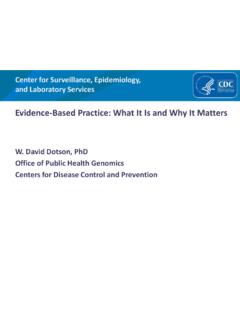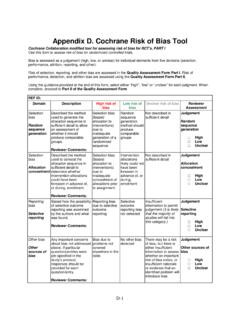Transcription of STRATEGIC PLANNING FOR COMMUNITY DEVELOPMENT
1 STRATEGIC PLANNING FORCOMMUNITY DEVELOPMENTA MANUAL FOR COMMUNITY LEADERSDECEMBER, 2001 The preparation of the training materials was underwritten as a collaborative effort betweenthe ND Department of Economic DEVELOPMENT and Finance, the ND Division ofCommunity Services, the ND Rural DEVELOPMENT Council, the ND Association ofRegional PLANNING Councils, and the ND PLANNING special thanks to Paul Rechlin, Director of the Lewis and Clark RPC who served onbehalf of the NDRDC, as the Chairman of the (Leadership ND Initiative) CommunityStrategic PLANNING Committee. To the Subcommittee Chairs: Writing - Kathy Tweeten,Finance - Dina Butcher, Marketing - Richard Gray, and to the many CSP Committeemembers who diligently attended and actively participated at the numerous and productivemeetings held over the past several for:The State of North DakotaPrepared by:The Leadership Imitative forCommunity STRATEGIC PlanningTable of 1 Step 1: Beginning the STRATEGIC PLANNING 3 Questions to Local Leadership on PLANNING .
2 4 Step 2: Assessing Your COMMUNITY s 6 Local Surveys .. 6 Leadership 7 Citizen 13 Business Survey .. 16 Economic Base Analysis .. 18 Step 3: Leadership 21 Prioritizing Key DEVELOPMENT 29 Step 4: STRATEGIC Action 34 Problem-Solving .. 35 Step 5: STRATEGIC Plan 45 Step 6: Implementation of the 48 Work 49 Performance Measurement .. 451 STRATEGIC PLANNING FOR COMMUNITY DEVELOPMENTINTRODUCTIONAs the world evolves into a global economy that is increasingly driven by technology andinformation, the communities of North Dakota need to determine what their future will beand how they will achieve it.
3 The former dependence on agriculture and natural resourcesis not likely to generate the necessary income and tax revenues to sustain rural NorthDakota. Many communities are losing population and are faced with fewer taxpayers topay for the maintenance of the existing are no easy answers to this dilemma. Building and sustaining an economicallyhealthy COMMUNITY with a desirable quality of life will require innovative thinking and newattitudes. Solutions will need to be developed through collaborative approaches thatinvolve an expanding leadership base and a more enlightened achievement of effective collaboration can occur using a systematic PLANNING processthat seeks to answer three basic questions: Where are we now?
4 Where do we want to be? How do we get there?This process is known as STRATEGIC PLANNING . It is a logical approach for addressing acommunity s problems that currently exist or that are likely to arise in the following document is a step-by-step approach to implementing this PLANNING process. It is designed to assist local leadership in moving effectively toward a completed strategicplan. A complementary document is available that explains the nature of this process. Thephases of the process are demonstrated in the following flow & ORGANIZATIONSTRATEGIC PLANNING PROCESSC onduct CommunityAssessmentIdentify Local Issues ANALYSISD efine Goals &ObjectiveEnvisionFORMULATIOND evelop StrategicActionsFinalize StrategicPlanFormulateOrganizational StrategicAction PlansAssignOrganizationResponsibilitiesI MPLEMENTATION Develop Work ProgramAllocate ResourcesReview Performance andProgressMonitor ActivityEVALUATIONA nalyze ImpactSTEP 1.
5 BEGINNING THE STRATEGIC PLANNING PROCESS3 Once a COMMUNITY or some of its leaders express an interest in moving through a strategicplanning process, several approaches can be taken. One approach is to have the communitydo its STRATEGIC plan emphasizing the use of local resources. This manual is designed toassist in a do-it-yourself approach to STRATEGIC second approach is to use a trained facilitator and a resource team of state/federalagencies, regional councils, and other agencies to assist in the STRATEGIC PLANNING processand to provide important information as needed. The Facilitators have undergone intensivetraining in STRATEGIC PLANNING for COMMUNITY DEVELOPMENT , and will work closely with thecommunity throughout the PLANNING STRATEGIC PLANNING process is, by design, a locally driven process that stressesparticipation.
6 It is particularly important to get the COMMUNITY s stakeholders involved inthis process. Stake-holders are the key leadership of the COMMUNITY who have a stronginterest in its DEVELOPMENT . Although the involvement of a number of COMMUNITY leadersmay add complexity and time to the PLANNING process, the ultimate effectiveness of the planin making significant changes in the COMMUNITY depends on the buy-in, support, andunderstanding of this are the leaders that are critical to this process? That really depends on the particularcommunity. However, the following list of key categories should be considered: Financial Local businesses Government Manufacturing Agriculture Medical services Social services Youth Senior citizens OthersThe specific roles of these leaders will be particularly important in the following steps ofthe STRATEGIC PLANNING process: Identification and prioritization of key issues Visioning Task forces Fund raising SpokespersonA key first task in the PLANNING process is establishing a local Steering Committee.
7 ThisCommittee will provide oversight to the PLANNING throughout the process. It is their role toensure that local needs are met and that the process moves smoothly forward. The Steering4 Committee also should raise any necessary funding for the PLANNING process, establishingkey policies, authorizing expenditures, and monitoring and evaluating Steering Committee should be comprised of between five to twenty stakeholders whorepresent a broad spectrum of the COMMUNITY . These should also be individuals whobelieve in the STRATEGIC PLANNING process, are personally interested in the future of thecommunity, are knowledgeable about the COMMUNITY , are willing to communicate andcooperate, are willing to take risks and support desirable change, and are committed of the first tasks of the Steering Committee will be to help identify local stakeholdersand leaders as indicated earlier, and then enlist their support.
8 This may involve one-on-onemeetings, letters, group meetings, presentations to local organizations, and invitations to aleadership would be desirable to work with the local leaders individually or preferably in smallgroups to have them answer the following questions:Why plan? (Questions to local leadership)Have each individual leader take a moment to answer in writing the following questions,using the form provided. Then have them share their answers with each other and What do you like or appreciate about your COMMUNITY ?2. What can you do to ensure that these attributes will be here ten years from now?
9 3. What are the most important problems that your COMMUNITY is facing?4. Why do these problems continue to exist?5. What can be done to resolve these problems?6. What major social and economic trends are occurring in the , and how will theyaffect our COMMUNITY ?7. How can the leadership of this COMMUNITY work together more productively to makethis a better COMMUNITY ?58. How can we use our COMMUNITY s limited resources more effectively to achieve theresults we want?9. Will the leadership of the COMMUNITY support a process to address these issues?If this discussion with local leaders makes it clear that they are unwilling to commit to thisplanning effort, the process should be terminated or postponed until such time that they areready to move help the leaders better understand what is involved in the STRATEGIC PLANNING process, itcan be explained by the preceding flow chart and the following questions:Initiation and Organization T How do we get the right start to this PLANNING processand get people involved in an effective way?
10 Conduct COMMUNITY Assessment T Who are we as a COMMUNITY ? What is unique aboutus? Why would someone want to live here? Why would a company want to locate here?Identify Local Issues T What is important to us in the growth and DEVELOPMENT of thiscommunity? What do we think our COMMUNITY s strengths and weaknesses are? What dowe need to focus on?Envision T Where does this COMMUNITY want to go? What would we like our communityto be or to look like ten years or more from now?Define Goals T Based on our priorities, what specific directions should we be headed?Develop STRATEGIC Actions T What do we need to do to accomplish our goals and tosolve our problems?







